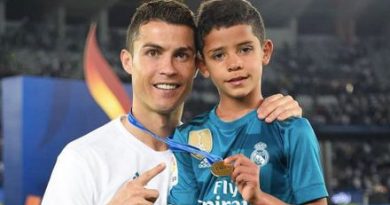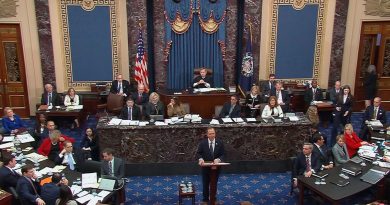Revitalizing Indigenous languages: Meet some of the people working to keep their language alive
In the spring of 2021, CBC Radio’s afternoon show in Victoria spoke to some of the many people working to revitalize Indigenous languages across Vancouver Island.
Those languages include Lekwungen, SENĆOŦEN, Hul’q’umi’num’, Ayajuthem, diitiidʔaaʔtx̣, Nuu-chah-nulth, and Kwak̓wala.
In some communities in British Columbia, only a few fluent speakers remain. Sometimes, they are “silent speakers” — elders who have knowledge of the language but have not actually spoken it since they were punished for using it as children in residential schools.
For one language, Pentlatch, which was spoken in the mid-island region between Nanaimo and Comox, there are no fluent speakers alive.
Now, younger generations are learning and teaching their languages at the same time. Their hope is that children who are starting school now will grow up as a new generation of fluent speakers.
These are the stories of a few of those people.
The Indigenous languages of Vancouver Island
CBC All Points West host Kathryn Marlow speaks to Glenn Jim of the First Nations Cultural Centre to learn about which languages are spoken where. He also shares the SENĆOŦEN word for “thank you”: HÍSW̱ḴE.
All Points West11:31VANCOUVER ISLAND’S INDIGENOUS LANGUAGES: One is sleeping, many are reawakening
There are six main groups of Indigenous languages on the Island, each with a number of dialects. Some are sleeping and others are awake or in various stages of reawakening. Each week on All Points West, we’re going to learn about one of those languages, but we start with an overview. For that, Kathryn Marlow turned to Glenn Jim, a Language Revitalization Coach at First Peoples’ Cultural Council, and a member of the W̱SÁNEĆ peoples.
Modernizing traditional language
Renee J-Sampson, the SENĆOŦEN Program Facilitator for the W̱SÁNEĆ School Board, tells All Points West host Kathryn Marlow about working with elders to create new words.
All Points West9:39VANCOUVER ISLAND’S INDIGENOUS LANGUAGES: Creating new SENĆOŦEN words to reflect modern life
All Points West is exploring Vancouver Island’s indigenous languages each week. In this segment, we meet Renee J-Sampson. She’s the SENĆOŦEN Program Facilitator for the WSANEC School Board, on the Saanich Peninsula. Kathryn Marlow spoke with her about how new words are created to grow the language and reflect modern life.
The healing power of language
Kwak̓wala speaker Deanna Nicholson is the language programs director at Nawalakw, a lodge in the Great Bear Rainforest where Kwakwa̱ka̱’wakw people can go to heal and learn culture. Nicholson explains how language is healing, and shares a Kwak̓wala phrase and the word ‘Gilakas’la’.
All Points West8:30VANCOUVER ISLAND’S INDIGENOUS LANGUAGES: Revitalizing Kwak̓wala on traditional territory at the Nawalakw Cultural Centre
Each week on All Points West, we’re exploring the indigenous languages of the island, and meeting the people who are working to revitalize them. Kwak̓wala is spoken on the north east coast of the island, and across the way on the central coast of the mainland. It is there, up an inlet along the central coast, two hours from Port McNeill by boat, where the Nawalakw Culture Project is coming to life. Deanna Nicholson is the brand new Language Programs Director at Nawalakw. She spoke with Kathryn Marlow.
The impact of colonization
Ayajuthum is the language shared by the K’omoks, Homalco, Tla’amin and Klahoose First Nations. Klahoose First Nation Language Director, Jacqueline Mathieu, speaks about the work she’s doing on Cortes Island and the impact of colonization on language.
All Points West7:55VANCOUVER ISLAND’S INDIGENOUS LANGUAGES: Revitalizing Ayajuthum in the K’omoks, Homalco, Tla’amin, and Klahoose First Nations
Each week on All Points West, we are taking a look at the Indigenous language revitalization work that is happening across the Island and coast. There are six active language groups, each with a number of dialects within them. The K’omoks, Homalco, Tla’amin, and Klahoose First Nations share a language called Ayajuthum. Jacqueline Mathieu is one of the people working to revitalize it. She’s the language director for the Klahoose First Nation, on Cortes Island. She spoke with Kathryn Marlow
Waking up a sleeping language
Pentlatch, one of the languages that lives on the island, is currently sleeping — meaning there are no living speakers. Qualicum First Nation member Jesse Recalma explains what he and others are doing to wake it up.
All Points West9:57VANCOUVER ISLAND’S INDIGENOUS LANGUAGES: Waking up the ‘sleeping’ Pentlatch langage
Each week on All Points West we explore language revitalization work that’s happening on Vancouver Island. There are six Indigenous languages spoken across the island and coast. Plus, there’s one that is not currently spoken. Pentlatch is referred to as a “sleeping” language. Jesse Recalma is working to wake it up. He’s a member of the Qualicum First Nation. Here’s his conversation with Kathryn Marlow.
Community is key
Victoria Wells, a member of the Ehattesaht First Nation, explains how she brings learners into a community context to strengthen their knowledge of Nuu-chah-nulth.
All Points West9:01Vancouver Island’s Indigenous Languages: ‘Community context’ part of Nuu chah nuulth learning process
Victoria Wells, a member of the Ehattesaht First Nation on Vancouver Island, talks about teaching the Nuu chah nulth language with the help of community context, and learning to make sounds from the back of the throat.
Teaching Hul’q’umi’num in Cowichan
Dolly Sylvester is the elder and knowledge keeper for the Cowichan School District, where she helps teach Hul’qumi’num to students and teachers of all backgrounds. She, and the district’s Principal of Indigenous Education Charlie Coleman, explain the program.
All Points West10:41VANCOUVER ISLAND’S INDIGENOUS LANGUAGES: sharing Hul’q’umi’num across generations
Each week on All Points West we explore language revitalization work that’s happening on Vancouver Island. There are six Indigenous languages spoken across the island and coast. The Hul’q’umi’num language is rooted in southeastern Vancouver island, and throughout much of the lower mainland. Dolly Sylvester is a member of the Cowichan Tribes, and is the District Elder/Knowledge Keeper for Indigenous Education at Cowichan Valley School District. Charlie Coleman is the district principal for Indigenous education. They spoke with Kathryn Marlow.
Learning and teaching simultaneously
Ditidaht First Nation members Sarah Tom and Pat Patterson talk about what it’s like to be learning and teaching your language at the same time.
All Points West12:26VANCOUVER ISLAND’S INDIGENOUS LANGUAGES: diitiidʔaaʔtx̣ educators use movement, ASL to reinforce language lessons
Ditidaht First Nation members Sarah Tom and Pat Patterson talk about working to revitalize diitiidʔaaʔtx̣ , one of the seven Indigenous language groups rooted on Vancouver island.
New ceremony songs
Tla-o-qui-aht brothers Hjalmer Wenstob and Tim Masso explain why they’re revitalizing Nuu-chah-nulth by writing new ceremony songs in their language.
10:52Tla-o-qui-aht brothers create new songs to help teach their language
Tim Masso and Hjalmer Wenstob talk about creating art and taking university courses to advance their passion for revitalizing the Nuu-Chah-Nulth language. They spoke with CBC’s Rohit Joseph.
Born in Kwak̓wala territory, teaching in Hul’qumi’num
Teacher Ted Cadwallader talks about his connections to two island languages, Kwak̓wala and Hul’qumi’num, and how he thinks Indigenous languages could save the land.
All Points West10:54VANCOUVER ISLAND’S INDIGENOUS LANGUAGES: A language journey from kwak’wala to Hul’q’umi’num’
Ted Cadwallader grew up on a reserve on the north island where kwak’wala was the traditional language, but he lives and works in Hul’q’umi’num’ territory. He shared the story of his relationship with both languages with Kathryn Marlow.
Teaching Ayajuthum in Campbell River
Mother and daughter Marilyn and Jennifer Harry describe how they’re helping Homalco First Nation members, and non-Indigenous Campbell River residents, learn Ayajuthum.
All Points West10:26VANCOUVER ISLAND’S INDIGENOUS LANGUAGES: Making a place for Ayajuthum in Campbell River
Ayajuthum is the language spoken by the people of the Homalco, K’omoks, Tla’amin, and Klahoose First Nations. Marilyn Harry is the language coordinator for the Homalco, based in Campbell River, BC. Her daughter Jennifer Harry teaches language and culture in the Campbell River school district. They spoke with Kathryn Marlow about how they’re helping Homalco and non-Indigenous residents learn Ayajuthum.
Distance learning across the Salish Sea
Malachi Joseph, from the Homalco First Nation, and Koosen, from the Tla’amin Nation in Powell River, tell us about the segments they produce in Ayajuthum for the Homalco radio station.
All Points West13:42VANCOUVER ISLAND’S INDIGENOUS LANGUAGES: Using old recordings to bring new life to Ayajuthum
Malachi Joseph, from the Homalco First Nation in Campbell River, B.C., and Koosen, from the Tla’amin Nation in Powell River, B.C., are working on revitalizing their shared language, Ayajuthum. They produce “word of the day” segments for Homalco’s radio station, and are digitizing old recordings which they turn into vignettes for airplay as well. All Points West host Kathryn Marlow spoke to them about their work, and what they’re learning.
Elder Zoom sessions
CBC’s Kathryn Marlow gets a chance to join a virtual Nuu-chah-nulth language learning session with Hesquiaht elders, organized by language teacher chuutsqa Layla Rorick. The sessions help Hesquiaht First Nation Members learn their Indigenous language.
All Points West9:40VANCOUVER ISLAND’S INDIGENOUS LANGUAGES: Hesquiaht elders, who are fluent Nuu-chah-nulth speakers, on the importance of sharing their language with younger generations
Hesquiaht elders are meeting are multiple times a week with language learners to share their Nuu-chah-nulth language. Kathryn Marlow joined one of their Zoom sessions to hear about what their language work means to them.
Building fluency against all odds
Dawn Foxcroft, the language co-ordinator at Tseshaht Language House, tells us how Nuu-chah-nulth learners work to build fluent speakers to keep the language alive.
All Points West11:20VANCOUVER ISLAND’S INDIGENOUS LANGUAGES: How Tseshaht language learners practice “staying in the language,” so they can spread fluency into the community
A few years ago, the Tseshaht First Nation, around Port Alberni, built the Tseshaht Language House. There, they run programs to get more people in the community speaking their dialect of nuu-chah-nulth. Dawn Foxcroft, who coordinates those programs, spoke with Kathryn Marlow.
Thank you to the First Peoples’ Cultural Council for sharing their knowledge of B.C.’s Indigenous languages for these stories. Check out their interactive map and First Voices project to learn about languages across B.C.





